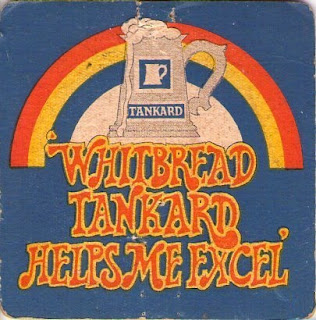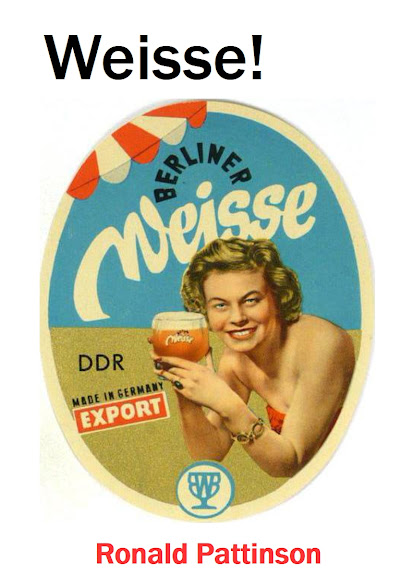The 1978 Sunday Mirror article I've been raiding wasn't the first time they'd had beers analysed. They had done something similar in 1971 and 1976. Leaving me with a stack more material.
While the 1978 article only looked at draught Bitter, in 1971 they also threw in some Mild Ales. Which is right down my street. In the 1970s I was a committed Mild drinker. There are far fewer analyses for Mild than Bitter, but it's better than nothing. So I'm not going to complain.
There are enough examples to be able to split them up by region. Something I always find instructive.
I drank most of these beers. The only exceptions being Watbeys Special Mild, Carlisle State Brewery Mild and Chesters Best Mild. Though I did have a later revived version of the last.
Speaking of Chesters, it debunks the myth of the dangerously strong "Fighting Mild". It's actually a pretty ordinary strength for a Mild of the period. How on earth did it get its reputation? Note that it's also not listed under Whitbread. It's all a bit strange, as Chesters merged with Threllfalls in 1961 and closed in 1966. The following year, Threllfalls was bought up by Whitbread.
Apologies for lumping MacMukken AK with the Milds. I'm going by how the Sunday Mirror classified it.
The London and Southeast beers are - surprise, surprise - the most expensive and worst value for money. They're also the weakest and with the poorest degree of attenuation. I know from having taken a close look at London Milds in the 1950s that versions brewed in the capital tended to be sweeter and darker than examples from elsewhere.
You have to wonder what's so "special" about Watneys Special Mild. Other than being especially weedy and expensive. And barely intoxicating at just 2.65% ABV.
It comes as no surprise that the Midlands Milds are the strongest. That was also the case in the 1950s. Ansell and Banks Milds have a gravity and ABV similar to Ordinary Bitter. The average attenuation is a good bit better than for the London examples.
Best value, however, are the Northern beers. Despite having an average OG 4º lower than the Midlands beer, the ABV is only a little lower, due to the higher degree of attenuation. The Northerners were also the cheapest and best value for money.
Cheapest and best value beer by far came from the Carlisle State Brewery. Based in Carlisle, the brewery and all the town's pubs were nationalised during WW Ito stop the many munitions workers who had moved into the area from getting too pissed. It had the cheapest beer in the country and turned a profit every single year until it was privatised in the mid-1970s by Ted Heath's government.
Next I'll be looking at Bitters.
| Mild Ales in 1971 |
| Brewer |
Beer |
Price
per pint (p) |
º
gravity per p |
%
ABV per p |
OG |
FG |
ABV |
App.
Atten-uation |
| Lonson and
Southeast |
| Watney |
Special Mild |
14 |
2.17 |
0.19 |
1030.4 |
1009.9 |
2.65 |
67.43% |
| Whitbread |
Best Mild |
11.5 |
2.69 |
0.26 |
1030.9 |
1007.7 |
3.01 |
75.08% |
| MacMullen |
AK |
11 |
3.00 |
0.30 |
1033 |
1007.4 |
3.32 |
77.58% |
| Average |
|
12.2 |
2.62 |
0.25 |
1031.4 |
1008.3 |
2.99 |
73.36% |
| Midlands |
| Marston |
Mild |
11.5 |
2.82 |
0.29 |
1032.4 |
1006.5 |
3.36 |
79.94% |
| M & B |
Mild |
11.5 |
2.94 |
0.31 |
1033.8 |
1006.5 |
3.55 |
80.77% |
| Ansell |
Mild |
13 |
2.88 |
0.28 |
1037.5 |
1009.45 |
3.64 |
74.80% |
| Banks |
Mild |
12 |
3.02 |
0.31 |
1036.2 |
1007.85 |
3.68 |
78.31% |
| Average |
|
12 |
2.91 |
0.30 |
1035.0 |
1007.6 |
3.56 |
78.46% |
| North |
| Sam Smith |
Taddy Mild |
11 |
2.89 |
0.32 |
1031.8 |
1005.1 |
3.47 |
83.96% |
| Carlisle
State Brewery |
Mild |
9 |
3.67 |
0.35 |
1033 |
1008.55 |
3.17 |
74.09% |
| Tetley
Walker |
Mild |
11.5 |
2.83 |
0.28 |
1032.6 |
1007.4 |
3.27 |
77.30% |
| Wilson |
Mild |
11 |
2.85 |
0.30 |
1031.3 |
1006.1 |
3.27 |
80.51% |
| Greenall
Whitley |
Mild |
11 |
2.85 |
0.31 |
1031.3 |
1005.4 |
3.37 |
82.75% |
| Chester |
Best Mild |
12 |
2.67 |
0.29 |
1032.1 |
1005.55 |
3.45 |
82.71% |
| Boddington |
Mild |
11 |
2.81 |
0.32 |
1030.9 |
1004 |
3.50 |
87.06% |
| Average |
|
10.9 |
2.94 |
0.31 |
1031.9 |
1006.0 |
3.36 |
81.20% |
| Overall
Average |
|
11.5 |
2.86 |
0.29 |
1032.7 |
1007.0 |
3.34 |
78.74% |
| Source: |
| Sunday Mirror - Sunday 21 March 1971, page 25. |


























































































